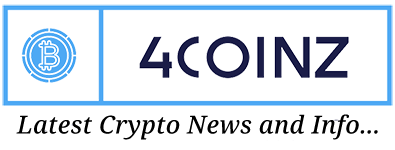Welcome to The Protocol, CoinDesk’s weekly wrap-up of the most important stories in cryptocurrency tech development. I’m Marc Hochstein, CoinDesk’s deputy editor-in-chief for features, opinion and standards.
In this issue:
Story continues below
- Solana was the biggest draw for new crypto developers in 2024
- No wonder: Solana’s transaction volume is off the charts
- Coinbase alums take next step toward no-code blockchain development
- Kraken’s ‘Ink’ layer-2 goes live
- Avalanche activates biggest-ever upgrade
- Ethereum’s ENS picks Consensys’ tech for its L2
- Bitcoin’s Stacks L2 gets an automated market maker for Runes
- Most Influential 2024: EigenLayer’s Sreeram Kannan
This article is featured in the latest issue of The Protocol, our weekly newsletter exploring the tech behind crypto, one block at a time. Sign up here to get it in your inbox every Wednesday.
NEW DEVS ❤️SOLANA: The Solana ecosystem, ground zero for the memecoin craze, was the most popular blockchain among new developers this year, according to a report released last week by Electric Capital. In July, this community became the first since 2016 to bring on board more devs than Ethereum. Solana attracted 7,625 new developers in 2024, the most of any chain and a little over 1,000 more than Ethereum. The results underscore the challenge Ethereum faces as rival smart contract platform Solana’s low fees and fast transactions attract investment and talent. Read more.
SPEAKING OF SOLANA: Solana’s network activity has lit up as the Pudgy Penguins NFT project debuted its native token, PENGU, on the programmable blockchain. Solana registered a total transaction tally of 66.9 million Tuesday, the highest daily volume since its inception in 2020, according to data source Artemis. To highlight how busy it was, Solana’s transaction count eclipsed the total of all other major chains combined. Read more
THE INK IS DRY: Kraken, the seventh-largest crypto exchange, said its layer-2 rollup network, built on top of the Ethereum blockchain, has gone live. The network, called Ink, is Kraken’s answer to Base, the highly successful blockchain launched by rival exchange Coinbase. Like Base, Ink is based on the OP Stack, a customizable framework that lets developers build their own rollups using Optimism’s technology. The team had originally planned for Ink to go live in early 2025, so the launch of its main network is ahead of schedule. Read more
AVALANCHE UPGRADE: Avalanche, a layer-1 blockchain launched in 2020 that’s now the tenth-largest by total value locked (TVL), activated its highly anticipated Avalanche9000 upgrade Monday, marking the ecosystem’s biggest technical changes to date. The network has been prepping for these changes for months, with new features that will cut the costs for sending transactions, operating validators and building applications on the network. Leaders at Avalanche previously said that part of the goal with the upgrade is to attract developers to Avalanche and encourage them to create customized blockchains using its technology, known as subnets, or “L1s.” Read more.
A BOON FOR RUNES: Crypto degens have a new – and, if all goes according to plan, faster, cheaper and safer – way to trade Runes, the Bitcoin ecosystem’s answer to memecoins. An automated-market maker (AMM) for the Runes protocol went live on Wednesday on Stacks, following the unveiling of the layer-2 network’s native BTC-backed asset sBTC on Tuesday. It’s the first AMM for such tokens on Stacks. The teams behind decentralized exchange (DEX) Bitflow Finance and Bitcoin bridge Pontis developed the AMM. Runes launched in April and spurred a flurry of activity, paying 78.6 BTC ($8.18 million) in fees in the first 90 minutes. However, less than a month later, this excitement waned considerably, with fees dropping more than 50%. Bitflow’s aim is for its AMM to help Runes scale and address some of the shortcomings holding it back. Read more.
ENS PICKS L2 TECH: ENS Labs, the company behind the Ethereum Name Service, has picked Linea’s technology to build its upcoming layer-2 network, Namechain. Linea is a zero-knowledge rollup that came out in July 2023 and was built by Ethereum infrastructure giant Consensys. It is the seventh-largest rollup network, according to L2Beat, with $1 billion locked in its ecosystem. Rollups are a special type of blockchain where one can transact faster and at a lower cost. There are two kinds of rollups: optimistic and zero-knowledge. Optimistic rollups use optimistic proofs, which have a seven-day window to dispute transactions before they are finalized. Zero-knowledge rollups, by contrast, finalize proofs within minutes. ENS has been described as “the phone book for Web3,” but a more precise analogy is the web’s domain name service (DNS). The domain name “CoinDesk.com” is easier to remember and type than a numerical IP address. Similarly, ENS handles like parishilton.eth, which the namesake heiress acquired in 2021, are more relatable than the strings of letters and numbers that make up Ethereum wallet addresses. For this service, “we need fast finality,” said Nick Johnson, the founder and lead developer of ENS. That’s because “you want to be able to update your ENS name and have the chain reflect it in the smallest interval possible. And to do that and have it remain decentralized and secure, we need fast finality, and optimistic roll-ups can’t deliver that.” Read more.
NO CODE, NO PROBLEM? Patchwork, a startup focused on simplifying blockchain and smart-contract development founded by former Coinbase employees, has released the next version of its low-to-no-code tools for building decentralized applications (dapps). Currently linked to Coinbase’s Base and backed by Coinbase Ventures, the “Create-Patchwork” picks-and-shovels approach lowers the barriers to building blockchain applications and attaching data to them. Following the trend toward easily generated content, the complex world of blockchains and smart-contract design is on a path to no-code applications, or a “text-to-app” experience. Create-Patchwork is the first of several features the team plans to roll out in early 2025 and a foundational step to enable creators to generate contracts and applications in seconds using natural language inputs. “Patchwork is an Ethereum protocol that makes it really easy to build dynamic on-chain applications,” co-founder Kevin Day said in an interview. “It lets on-chain things own other on-chain things, and it allows anyone to attach programmable data to on-chain things.” Read more

For a crypto founder who’s attracted so much controversy, Sreeram Kannan is surprisingly sanguine.
In a wide-ranging interview after his selection as one of CoinDesk’s “Most Influential” figures in crypto for 2024, the EigenLayer founder was generous with his time, chatting more than an hour beyond our scheduled slot. I was surprised at his openness because the last time we spoke, a colleague and I had just published an investigation into potential conflicts of interest at his company, Eigen Labs, and in the interim Kannan had disavowed our reporting point-by-point on a Blockworks podcast.
This time, Kannan emerged in a different light. Whatever his misgivings about CoinDesk’s past coverage, they didn’t seem top-of-mind.
What emerged wasn’t the portrait of a defensive tech founder, but rather that of a driven, thoughtful academic-turned-entrepreneur still adjusting to a spotlight few in this industry ever enjoy. Instead of bitterness or evasion, I found ambition, reflection and a quiet kind of excitement.
Kannan seemed as astonished as anyone by how swiftly EigenLayer had transformed from a concept into one of crypto’s most talked-about experiments, telling CoinDesk that he continued to view EigenLayer as a “scrappy startup.”
Over the past 12 months, EigenLayer — which allows emerging blockchain applications to borrow Ethereum’s robust security — went from a relative unknown to an industry heavyweight. The platform raised more than $100 million from venture firms including Andreessen Horowitz and, before even fully launching, drew hundreds of millions of dollars in deposits from crypto users seeking extra yield. Many were incentivized by a viral points program that investors hoped would translate into a lucrative future token airdrop.
EigenLayer’s success during the bear market was striking, and Kannan may have played a larger role than any other entrepreneur in revitalizing decentralized finance on Ethereum. But not everything went according to plan. Industry critics took issue with the EIGEN token distribution plan — which locked up tokens for months and barred claimants from certain geographies — as well as the platform’s slower-than-expected feature rollout and concerns about “rehypothecation,” or the reuse of collateral for multiple purposes. In August, the CoinDesk investigation (that Kannan disputed in the podcast) raised questions about EigenLayer’s conflict-of-interest policies, which may have allowed employees preferential access to tokens powered by its platform.
None of this seemed to derail Kannan’s intellectual ascent. Beyond running Eigen Labs, he still holds a position as an affiliate professor of electrical and computer engineering at the University of Washington, and his theory of “restaking” — letting people reuse staked Ethereum assets to secure other networks — has sparked a wave of innovation and copycats. He’s become a familiar face on the conference circuit, where he unpacks his vision of blockchains as tools for solving humanity’s endless “coordination problems.”
Blockchains, Kannan says, “are the biggest upgrade to human civilization since the U.S. Constitution.”
CLICK HERE FOR THE FULL PROFILE BY COINDESK’S SAM KESSLER:
‘Wrapped’ in intrigue
Deals and grants
Regulatory and policy
Calendar
- Jan 9-12, 2025: CES, Las Vegas
- Jan. 15-19: World Economic Forum, Davos, Switzerland
- January 21-25: WAGMI conference, Miami.
- Jan. 24-25: Adopting Bitcoin, Cape Town, South Africa.
- Jan. 30-31: PLAN B Forum, San Salvador, El Salvador.
- Feb. 1-6: Satoshi Roundtable, Dubai
- Feb. 19-20, 2025: ConsensusHK, Hong Kong.
- Feb. 23-24: NFT Paris
- Feb 23-March 2: ETHDenver
- March 18-19: Digital Asset Summit, London
- May 14-16: Consensus, Toronto.
- May 27-29: Bitcoin 2025, Las Vegas.

